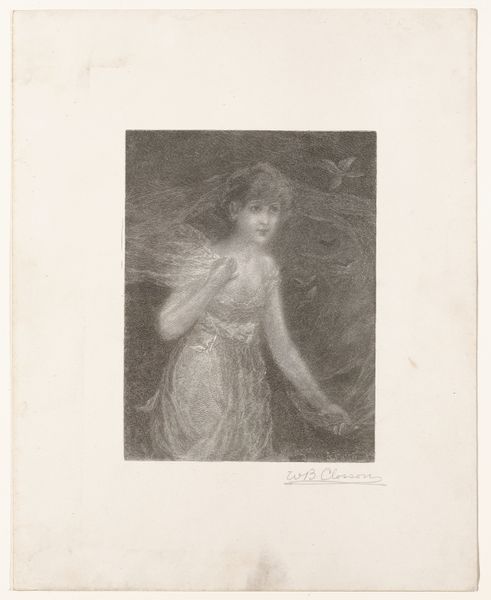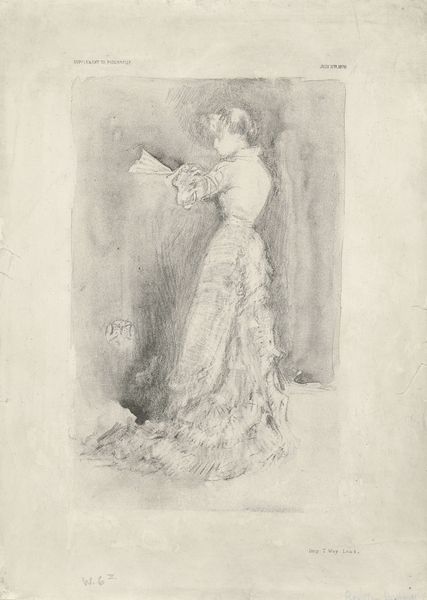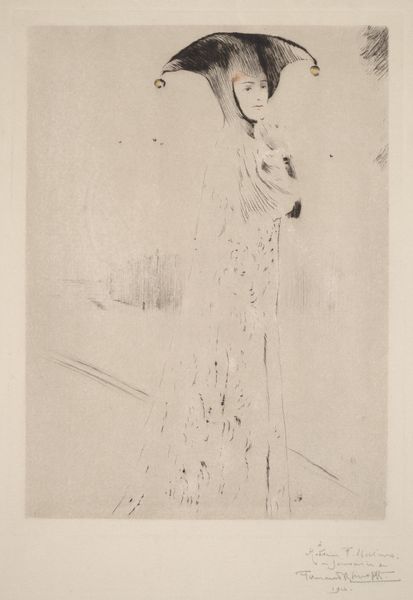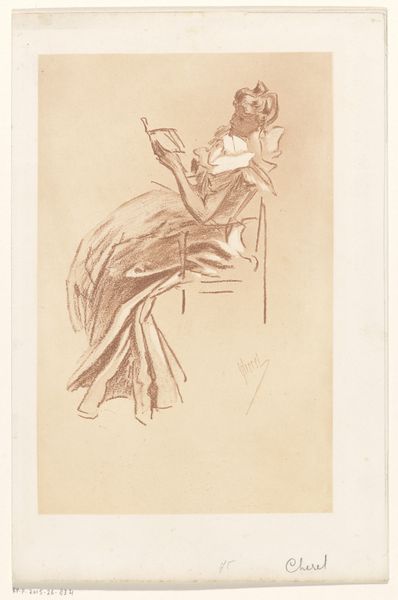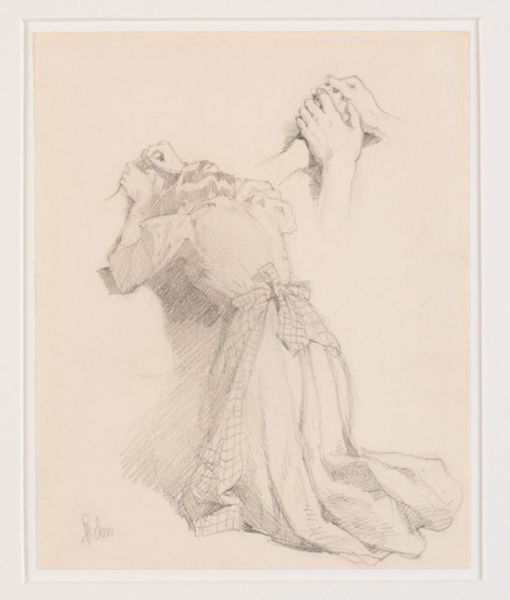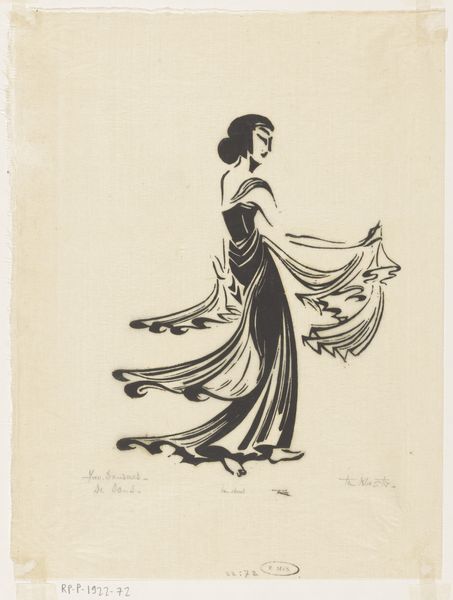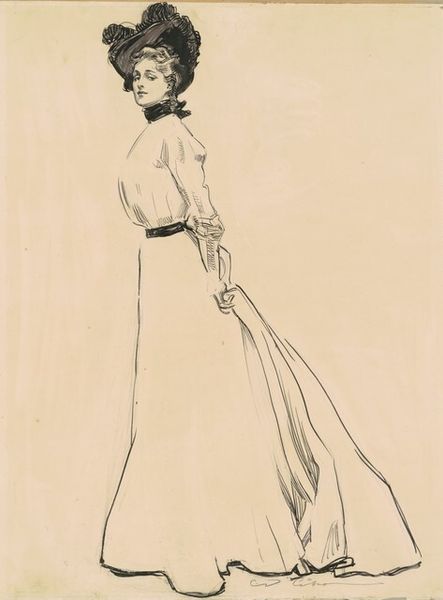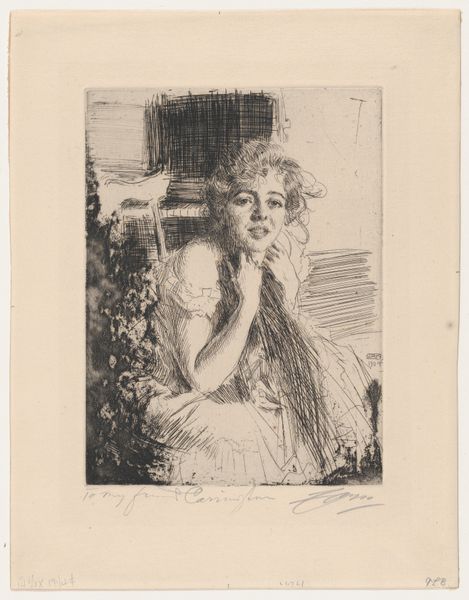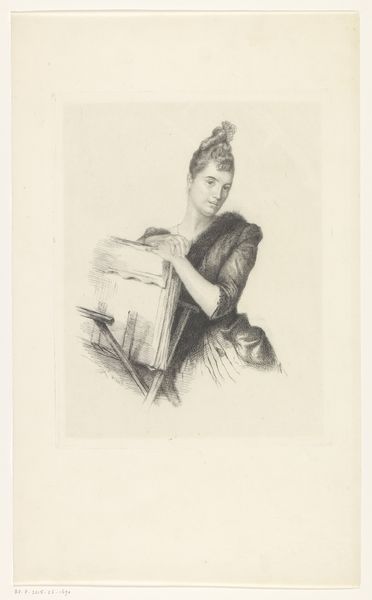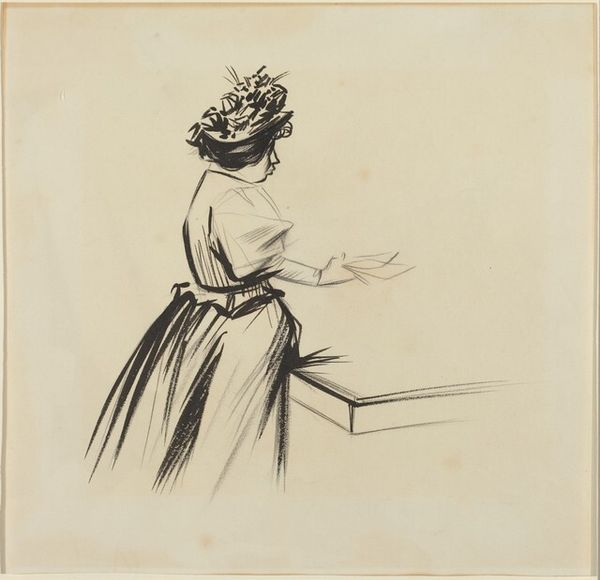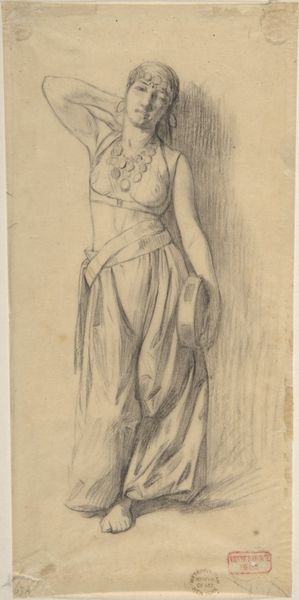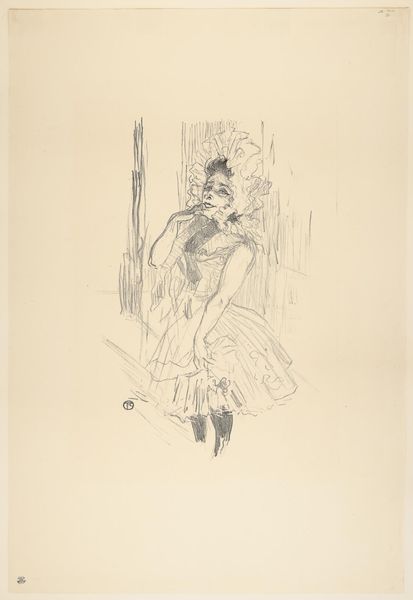
Dimensions: 224 × 150 mm (image/plate); 306 × 230 mm (sheet)
Copyright: Public Domain
Curator: Oh, she’s a whisper! The etching, Anders Zorn’s "Miss Lurman" from 1901… it feels so ephemeral. Like a dream you’re not quite sure you had. Editor: There's a lot to unpack in this particular portrayal of femininity during that period. What's your initial read on her, artistically speaking? Curator: Well, beyond the obvious fin-de-siecle glamour? It's all about movement and light. See how Zorn captures the texture of the dress with these swirling, almost frantic lines? And her stance… confident but gentle. It’s like she’s about to float off the paper! She certainly gives me that feeling, as she floats over our gaze. Editor: The Impressionist influence is really evident here in how Zorn uses etching to capture light and fleeting moments, challenging conventional beauty standards through its candidness and blurring of the lines between public performance and private identity, what do you make of that? Curator: It feels so intentionally constructed, and that's something I admire because beyond all that light you are describing, the image comes off as genuine. Like he just caught her in a passing moment. It's seductive! What do you think it meant, identity wise, to depict a woman like that back in the day? Editor: It's tricky. On one hand, we see the familiar objectification of women, particularly within wealthy social circles and their display for the male gaze. On the other hand, portraits such as these, particularly by male artists like Zorn, could simultaneously subvert the static role that a woman in this context was expected to embody and show this playful sense of feminine performance. But again, this interpretation depends entirely on who's doing the viewing. Curator: See, I knew we’d disagree a bit! I think there is definitely that feeling of performance there, yes! Yet it's difficult not to be struck by the confidence emanating from the sitter’s face. It might all be an impression created by technique and brushstrokes, or tools more accurately, but that image tells its own unique story I am ready to interpret. Editor: Well, it's hard to deny the sitter a presence. The context also helps to appreciate it further; knowing Zorn himself often worked on depicting marginalized communities across Europe definitely colors my viewing. His work invites a contemporary audience to continuously reassess portraiture as a complicated dialogue about power, representation and—sometimes, beauty. Curator: Exactly! And that makes this "Miss Lurman" print far more intriguing than just another pretty face from a bygone era, indeed. It's an echo of its time—still shimmering. Editor: Yes. Thank you for helping to open this work up! The complexities indeed shimmer!
Comments
No comments
Be the first to comment and join the conversation on the ultimate creative platform.

